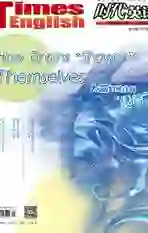石头里的故事
2020-08-19V.M.希利尔(仲秋译)
V.M.希利尔(仲秋 译)
V.M.希利尔(1875—1931),美国著名的儿童教育家、科普作家,创建了卡尔弗特教育体系。他为孩子们编写了一套趣味盎然的历史、地理、艺术读物,即《写给孩子看的世界历史》《写给孩子看的世界地理》《写给孩子看的艺术史》。本文选自《写给孩子看的艺术史》。
What would you call men who went about with hammers and broke all the statues they could find, and who even went into churches and broke the statues there? Probably you would say they were bad men or crazy and should be locked up.
You would be right, and they would be locked up nowadays. But long ago (about 800 AD) such men were not bad or crazy, and no one tried to lock them up. They broke statues because they thought statues were too much like idols. They thought a church especially should have nothing like an idol or an image in it. An image is called in Greek an icon and these men were called iconoclasts, which means image smashers. They smashed a great many statues, and the poor sculptors had to move away from the cities where the iconoclasts were if they still wanted to make statue.
However, the iconoclasts didnt seem to mind small sculptures in relief. And so in the time of the iconoclasts and for many years afterward many beautiful bas reliefs in ivory, silver, and gold were made. The carvings in ivory were used as the covers of books, writing tablets, and little boxes. The place to see them now is in museums where they are kept carefully in glass cases. When you look at them, remember the iconoclasts and why there were no good statues in the full round for a long time after the Romans.
Some sculptors had to leave Byzantium—the old name for Constantinople which was the old name for Istanbul—because of the iconoclasts. They traveled to France and carried on their work there. And it is to France that we turn for our next great statues. They belong to the Middle Ages, several hundred years after the iconoclasts. And, strangely enough, these statues were all carved for churches—just what the iconoclasts didnt want! In fact, the churches were simply covered with statues, which were made of the same kind of stone as the buildings and not of marble like the Greek and Roman statues.
如果我告訴你,有些人专门拿着锤子砸碎所有他们能找到的雕像,甚至还跑到教堂砸碎里面的雕像,你觉得这是些什么人呢?你多半会说:他们是坏人或者是疯子,应该被抓起来关押。
要是这样的事情放在现在,你或许说得没错,这样的人肯定会被关押起来。而在大约公元800年的时候,距现在很久以前,这些人并不是坏人,也不是疯子,更没有人把他们关押起来。这些人砸碎雕像是因为他们认为这些雕像具有非常强烈的偶像崇拜的含义。尤其在教堂里他们认为不应放置任何具有崇拜含义的人物雕像或图案。图案在希腊语里叫作“icon”,而这些砸碎它们的人则叫作“iconoclasts”,也就是“崇拜雕塑破坏者”。崇拜雕塑破坏者砸碎了许许多多的雕像,那时候的雕塑家也很可怜,如果还想继续做雕像,他们就不得不离开这些“破坏者”所在的城市。
不过崇拜雕塑破坏者似乎并不破坏小型的浮雕作品。所以,即使在“破坏者”当道的时代,以及之后的很多年里,很多用象牙、白银、黄金做成的精美的小型浅浮雕被保留了下来。比如象牙制成的小浮雕通常用在书的封面、镇纸板以及小盒子上。在博物馆我们可以看到这类象牙浮雕,它们现在被小心翼翼地保存在玻璃罩子里,仅供人观赏。看到这种浮雕作品时,你就应该记起崇拜雕塑破坏者来了,因为正是他们使得在古罗马之后的很长一段时间里,都没有好的大型圆雕作品的出现。
也正因为崇拜雕塑破坏者的存在,许多雕塑家不得不离开位于土耳其的拜占庭(拜占庭后来改名为君士坦丁堡,现在叫伊斯坦布尔——译者注),带着他们未完成的作品前往法国,继续他们的雕刻工作。也正是在后来的法国,出现了一批伟大的革新雕像作品。这些雕像出现于中世纪时期,也就是在崇拜雕塑破坏者时代的几百年之后。奇特的是,中世紀时期的这些雕像都是为教堂而雕刻的,而这却正是崇拜雕塑破坏者最不希望看到的。实际上,中世纪时期的教堂被雕像覆盖了,这些雕像使用的材料和修建教堂时用的普通的石头一样,而不再是那种古希腊或古罗马雕像所用的大理石了。
Word Study
idol /'a?dl/ n. 偶像;神像
smash /sm??/ v. 打破,破碎
relief /r?'li?f/ n. 浮雕;浮雕法;浮雕作品
The bronze doors are covered with sculpted reliefs.
These statues were really part of the churches. The cathedral at Chartres, in France, has not less than ten thousand figures of men and animals on it. They are everywhere—over the doorways, on the columns, on the roof, under the windows, on the walls. Even the waterspouts are carved in the forms of queer animals.
Most of the people of the Middle Ages could neither read nor write, so all these sculptures on the churches took the place of books. They told the people stories of the Bible and of the saint. You see they were useful as well as ornamental.
They are called Gothic figures because churches and cathedrals of the Middle Ages were built in the Gothic style. The Gothic figures on a cathedral are of almost every kind of living thing you could think of. There are scenes from the Bible, statues of saints, carvings of animals and flowers, pictures in stone of the seasons, of different kinds of work like farming and writing, wood chopping and fighting. There are figures of men and women, of actual creatures and of strange unheard-of make-believe creatures. And each of these figures was made for that particular part of the cathedral where it was placed. The statues were not stuck on after the cathedral was built. They were a part of it, built into it, and made of the same stone.
Do you remember when you had a sore throat and had to gargle? On the Gothic churches there are statues that gargle. They dont have sore throats, of course, but they gargle every time it rains. They are rain spouts and have holes in them so water can run out through their mouths. Like the statues that told the stories of the Bible, they are useful as well as ornamental. We call them gargoyles, which is another way of saying they gargle.
The gargoyles were carved in the shapes of the queerest animals you can think of. Some have heads like monkeys, some have three heads, some have their tongues sticking out as if they were making faces. Some have claws like eagles, others hands like men.
The queer animals that werent made to gargle are called grotesques. Most of them are up near the roof like the gargoyles and seem to be looking down and laughing at the people on the ground. The sculptors on the old cathedrals must have enjoyed carving their grotesques and gargoyles.
法国的这些雕像已经成为教堂的一部分了。极具典型的是法国沙特尔大教堂,这座教堂里雕像无处不在,教堂的门道上、柱子上、屋顶上、窗沿上,更不用说墙壁上了,总共有一万多幅人物和动物雕像,甚至连排水槽都被刻上了奇怪的动物造型。
在中世纪,大部分人都不认识字,更不会写字。教堂的雕塑就成为书本的替代品,向人们讲述《圣经》的故事、圣人的事迹。所以,这些雕塑除了装饰,实际用途也不小。
这些中世纪的雕塑也被称为“哥特式雕塑”,因为当时的教堂都是哥特式建筑风格。大教堂上的哥特式雕塑几乎包括了所有你能想到的人和物件。它们包括了《圣经》中的场景、圣人像,动物、花草、四季风景,还有各种各样的人类活动,比如农活、写字、砍柴、打斗,等等,不一而足。雕刻的形象除了包括以上现实中的人物和动物,还包括一些奇怪的形象,社会中不存在的,抑或是传说中的生物。每个雕刻作品都符合它所处的教堂里的特定位置,而且,这些雕像并不是在教堂建成后才安放上去的;相反,它们是在修建教堂的砖石上直接雕刻出来的,因此它们与教堂融为了一体。
你是否记得每次喉咙痛的时候含着盐开水漱口,然后吐水的样子?(原文只说“漱口”。“盐开水”是译者根据中国的生活经验所添加)你要是知道哥特式大教堂的雕像也能吐水,是不是很好奇呢?不过,雕像吐水当然不是因为喉咙痛。这种会吐水的雕塑有实际的用途,是雨天用来排水的设施,它们只会在下雨时吐水。它们内部有排水孔道,雨水可以顺着孔道流到它嘴巴里,然后喷出来。所以,和那些向人们讲述《圣经》故事的雕塑一样,它们除了做装饰外也有它们的实际用途。因为雨水槽的雕刻形象一般都是动物的造型,我们把这类雕塑也叫作“滴水嘴獸”。
滴水嘴兽被雕成了人们能想到的各种千奇百怪的动物样子。有的像猴子脑袋,有的长着三个脑袋,有的像在做鬼脸似的吐着舌头,还有些长着鹰爪,另外一些则长着人手。
还有些雕塑也非常奇怪,虽然它们也是动物雕塑,但是不会吐水,被人们称作“怪诞雕像”。这种怪诞雕像和滴水嘴兽一样,也刻在离屋顶不远的地方,看上去像是在俯视下面的人,并嘲笑他们。想必中世纪古老教堂的雕塑家们一定对雕刻滴水嘴兽和怪诞雕像乐此不疲吧。
Word Study
queer /kw??(r)/ adj. 奇怪的;反常的
gargle /'ɡɑ?ɡl/ v. 含漱;漱喉
